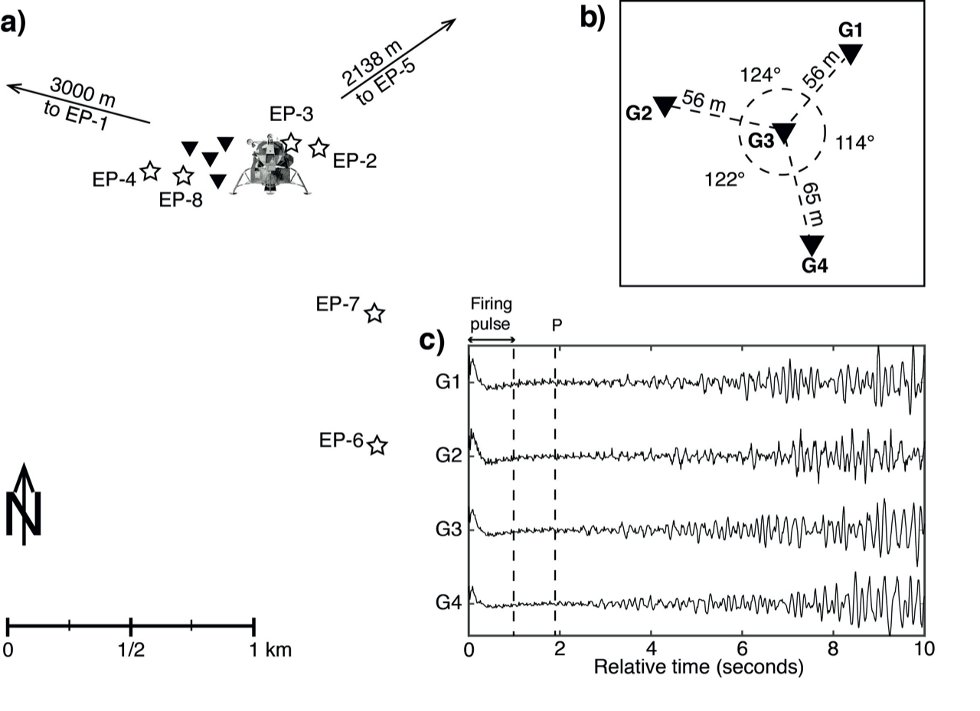Rotational seismograms on the Moon
Due to the complexity of the seismograms recorded on the surface of the Moon during the Apollo missions over 40 years ago, only a very limited amount of information about the lunar subsurface could so far be extracted from these recordings. By applying a novel analysis technique based on the computation of rotational ground-motion, we were able to identify, for the first time, shear wave arrivals in the complex seismograms and to characterize the recorded seismic arrivals in terms of their propagation direction and velocity. This led to the extraction of the first shear wave velocity profile of the shallow lunar crust. Besides a better understanding of the lunar subsurface, the demonstrated extraction of a rich amount of information from the very limited amount of data available, prove the relevance of rotational seismic measurements not only for space exploration but also for land seismic exploration on Earth.
Related publications
Sollberger, D., Schmelzbach, C., Robertsson, J.O.A., Greenhalgh, S.A., Nakamura, Y., & Khan, A. (2016). The shallow elastic structure of the lunar crust: new insights from seismic wavefield gradient analysis. Geophysical Research Letters, 43(19), 10,078-10,087. external page http://onlinelibrary.wiley.com/doi/10.1002/2016GL070883/full

